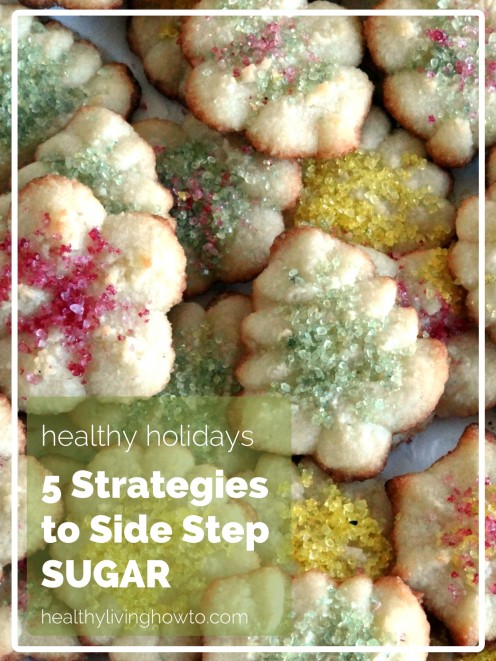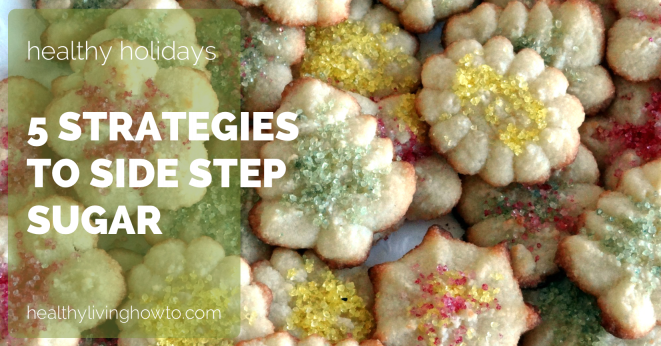Over the top, but true, excess sugar is toxic to our health. In all its forms, whether processed or natural (I'm looking at you honey and maple syrup), sugar negatively influences our health. Sugar suppresses the immune system, is the perfect food for bad bacteria in the gut, has been linked to obesity, hypertension, heart disease, type II diabetes, depression…you get the point. Sugar is so detrimental to health, it has become a major focus in cancer research, leading experts to believe if we limit sugar intake we decrease our chance of developing cancer. To the brain, sugar is addicting just like drugs and alcohol (some experts argue even more so); over time we need more and more for the sugar “high”. When it comes right down to it, sugar is not healthy for our bodies, whether young or old, big or small.
With the third largest sugar-laden holiday ahead of us, the temptation to eat and drink sugar is all around us. From the plates of cookies to the toasts of egg nog, if you want to side-step sugar this season and ring in the new year healthy, it is going to take a strategy. Here are five strategies I have found to be successful in overcoming sugar cravings…
1. Understand Why Sugar is Not Healthy
In overcoming my own sweet tooth, I found the more I learned about how sugar is harmful to health, the stronger my conviction to avoid it became. You can take my word for it or you can arm yourself with knowledge. There is no shortage of information, but here are a few of my favorite educational pieces:
- Is Sugar Toxic
- The Truth About Sweeteners
- Big Sugar's Sweet Little Lies
- 6 Healthy Sugars That Can Kill You
2. Set the Stage First Thing in the Morning
After an overnight fast our blood sugar is within a normal range, our body is happily burning fat for energy and our insulin levels are low. What we eat to “break the fast” sets the stage for the rest of the day. If we start our day with healthy protein, fat and fibrous vegetables there is little fluctuation in our blood sugar between meals. There is no blood sugar high or low. If we start the day with carbohydrates, like the average American breakfast of cereal with skim milk, toast and a glass of juice, our blood sugar sharply goes up and then plummets below normal, just like a rollercoaster. Because our body is searching for homeostasis, it sends the signal to your brain to eat. That signal isn't saying eat protein and fat, it's saying eat sugar to bring up blood sugar. White-knuckling it and sheer will and determination isn't enough to override this. If we want to hormonally set ourselves up for success and side-step sugar throughout the day, keeping blood sugar stable is key.
3. Implement a Supplement Strategy

4. Get Adequate Sleep and Manage Stress
Getting less than 7-8 hours of sleep each night disrupts our natural rhythm of the stress hormone cortisol. Just one single night of insufficient sleep can increase cortisol levels which subsequently leads to out of control blood sugar. This is the reason many people experience cravings for sugar and sweets when under stress and/or sleep deprived. Not only does sleep impact stress, but stress impacts sleep. When we are under chronic stress, elevated levels of cortisol makes going to sleep or staying asleep difficult. In order to strengthen our resolve and side-step sugar learning to sleep and manage stress is a must. As someone who has experienced significant adrenal fatigue, and suffered the effects of poor sleep, an out of control stress response and subsequent sugar cravings, I cannot stress this enough.
5. Make Healthy Sugar-Free Versions of Your Favorites
When we implement the first four strategies the hormonally driven sweet cravings slowly diminish and our body no longer “needs” sugar, however, we may still “want” a treat. There is no reason to feel deprived during the holiday season as healthy sugar-free recipes, for nearly every traditional holiday favorite, is just a Google search away. Look for recipes using all-natural (GMO-free) sugar-free sweeteners like stevia, erythritol and xylitol that have no impact on blood sugar and steer clear of unhealthy artificial sweeteners. Along with replacing sugar-laden treats with their healthy sugar-free alternatives, I like to incorporate treats as “part of” my meal instead of “in addition to” my meal and stop eating when I am satisfied as opposed to stuffed. If a healthy sweet treat is so good that I find myself wanting more, even though I am not hungry, I trick myself by saying I can have more at my next meal or tomorrow.
